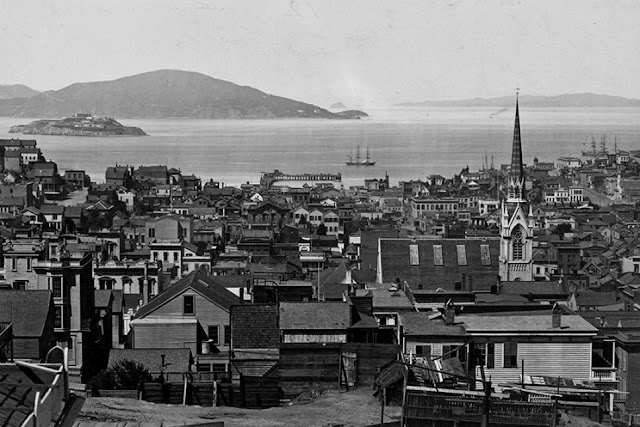~
Styrous® ~ Saturday, April 17, 2021
Thornton Wilder - 1920
photo: Roger Sherman Studio
Today is the birthday of American playwright and novelist, Thornton Wilder. Born on April 17, 1897, in Madison, Wisconsin. He won three Pulitzer Prizes: for the novel The Bridge of San Luis Rey and for the plays Our Town and The Skin of Our Teeth. He also won a U.S. National Book Award for the novel The Eighth Day.
I
have an indirect connection with Wilder on several levels. When I was in
my English Lit class in high school, one of the books I read for one of
my book reports was his novel, The Bridge of San Luis Rey.
His novel had a profound impact on me as it was my first awareness of Chance Operation where time, things, people,
events converge with no obvious plan but effect those involved in different ways (link below). This was long before I had heard
of John Cage, Charles Ives, Karlheinz Stockhausen, and Alan Hovhaness with their concepts of Aleatoric music; then 30 years later applying the concept to the ButohDrawing performances by Tom White that resulted from it (link below).
Another
level was in the early sixties, when I was acting and appeared in a performance of The Skin of Our Teeth; I met his nice,
Grace Wilder who had been involved with theater her whole life. She was a delightful old lady who
had a wonderful sense of humor and told amazing stories. I remember
visiting her home/studio perched on the side of Telegraph Hill where she had been living for decades. The area by then was nothing but rundown housing inhabited by outcasts and
artists; characters that could have been right out of the Cannery Row novel by John Steinbeck. The structures had been built sometime in the 1800's and had survived the 1906 Earthquake but were dilapidated
and probably very dangerous. A story in a 1947 newspaper stated that "the reason Telegraph Hill was reasonably safe in 1906,
was due to how the "Italians and Spanish kept it from burning by
quenching, with buckets of red wine and wine-soaked blankets, the flames
that threatened their tinder-dry frame houses and board shanties."
Seems to me the alcohol in the wine would have added to the fire,
but what do I know?
There was an abandoned quarry just below her place that threatened all the buildings on her side of the hill. In 1927, Philo Farnsworth invented the first fully functional all-electronic image pickup device video camera tube and produced the first electronic television transmission in his Green Street lab in the Telegraph Hill quarry.
Telegraph Hill - ca 1885
Photo: San Francisco History Center
San Francisco Public Library
As far as I can remember, her studio was somewhere in the area I've circled in red in the above photograph I cropped:
There were two or three huge casement widows that swiveled up in her studio and you could see the San
Francisco bay. The photo below is from 1878 but take the church out of it (I don't remember seeing it)
and the view looked pretty much the same.
The
paths along the way to get to the dwellings on the hill were all made
of wood and I
remember the steep stairs and uneven walkways were rickety and scary.
On January 2, 1857, a newspaper reported about the graveyard on Telegraph Hill:
"During the late storm a miniature avalanche of rock and dirt occurred at a quarry on Telegraph Hill, in Sansome Street North of Vallejo. The fall exposed several coffins which were buried high up on the hill, and on examination it was found that a great number of graves were scattered about. A headboard in one place bore the following inscription: "Here lies the remains of James Anderson, seaman on board the U.S.F. Congress, a native of Canterbury, England, died July 16, 1847, aged 41 years. The coffins were in remarkable state of preservation.
The Telegraph Hill Dwellers site (link below)
states that Telegraph Hill has had a series of names through its
history. Allegedly the Spanish called it Loma Alta. Others referred to
it as Clark's Point, Prospect Hill, Signal Hill, Windmill Hill, Goat
Hill and Tin Can Hill (fits in with Steinbeck's Cannery Row).
Telegraph Hill map
The Bridge of San Luis Rey has been translated to film in 1929, 1944, 1958 (for TV) and in 2004 with F. Murray Abraham, Kathy Bates, Robert De Niro and Harvey Keitel, and a score written by Lalo Schifrin. In 2018 it was adapted for the stage by David Greenspan.
The Bridge of San Luis Rey - 1929
movie poster
The Bridge of San Luis Rey - 2004
movie poster Some
time in the seventies, I think, the old buildings on Telegraph Hill were demolished to
build condos but Grace had died long before that happened.
Viewfinder links:
Net links:
Found San Francisco ~ Telegraph Hill's Architectural Survivors
Telegraph Hill Dwellers ~ Walking the Historic District
YouTube links:
Sam Waterston ~ The Bridge of San Luis Rey (audio bok)
The Bridge of San Luis Rey (review) The House on Telegraph Hill (1951) (complete movie)
"My advice to you is not to inquire why or whither,
but just enjoy your ice cream while it's on your plate."
~ Thornton Wilder







No comments:
Post a Comment
PLEASE NOTE: comments are moderated BEFORE they are posted so DO NOT appear immediately.
Thank you.